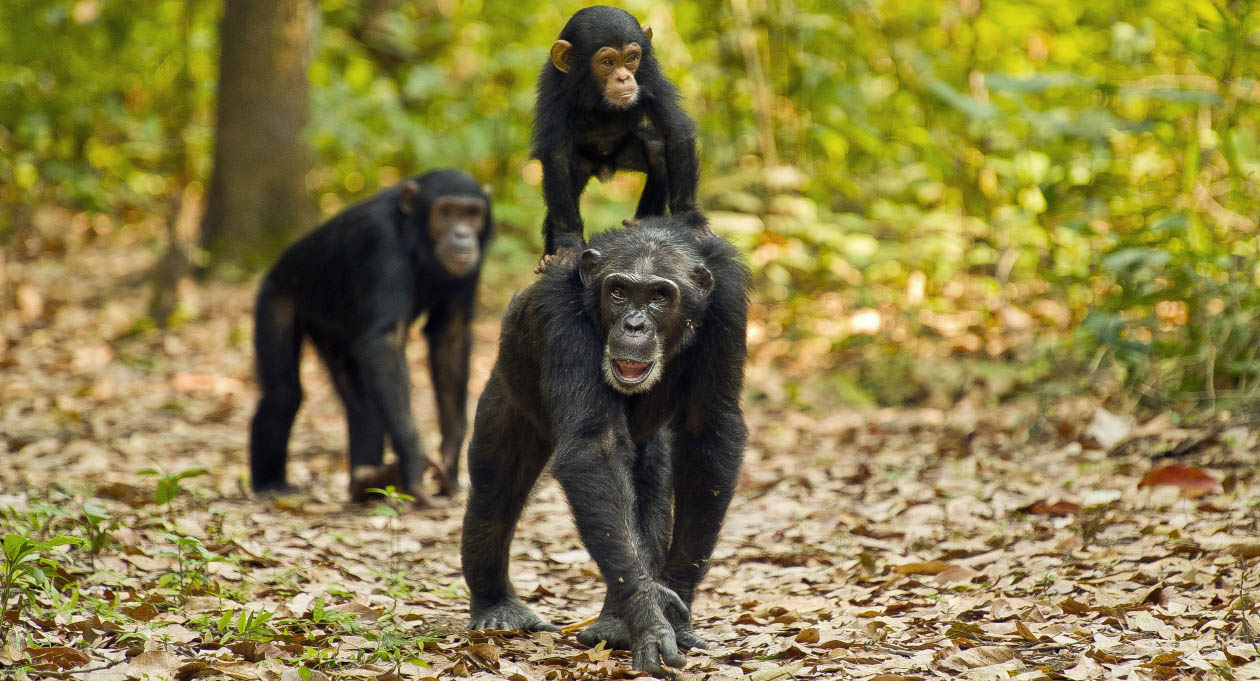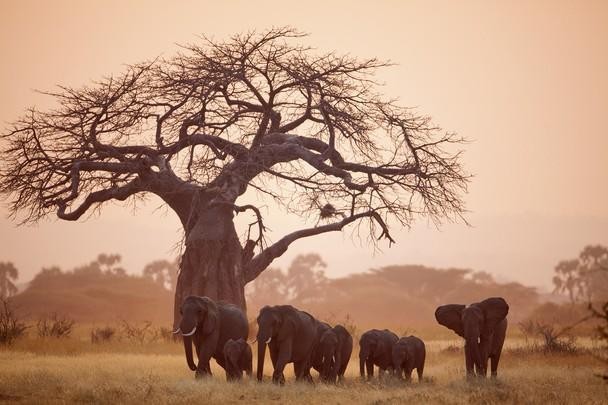Wildlife in Tanzania
Tanzania is a fine wildlife destination on the continent of Africa found in the East region, Tanzania is a recognized habitat for a range of wildlife species found in protected areas situated in various regions of the country.
Tanzania hosts numerous species of serval wildlife in Tanzania such as lions, elephants, buffaloes, endangered lions, gazelles, elands, cheetahs, African wild dogs, elephants, chimpanzees, olive baboons, and many more.
Tanzania experiences the world’s greatest animal migration the wildebeest migration, the wildebeest migration is the most famous animal aspect in Tanzania experience in Serengeti national park.
In the wildebeest migration, millions of animals including gazelles, elands, zebras, and wildebeest migrate to Serengeti national park on their way from Masai Mara national reserve found in Kenya. Best Wildlife parks in Tanzania are protected in various protected areas such as Gombe stream national park, Serengeti national park, Arusha national park, Ngorongoro conservation area, and many more.
Below is the top areas in Tanzania habiting wildlife and they are as explained below
-
Gombe stream national park
Gombe stream national park in Tanzania also known as Gombe national park is located in the western Kigoma region in a distance of 20 kilometers north of Kigoma the capital of the region, this park is relatively a small national park and one of the smallest national parks in Tanzania covering an area of 52 square kilometers

Gombe stream national park comprises of steep rich valleys, forest canopy, and swift streams, the park is a residence to primates and famed for being home to habituated chimpanzees.
Importance of wildlife in Tanzania, Apart from chimpanzees, there are also olive baboons, red-tailed colobus monkeys, vervet monkeys, occasional hippos, forest elephants, bush pigs, and leopards which are rarely seen. Though Gombe stream national park hosts few species of animals it offers rewarding wildlife viewing safari experiences most especially chimpanzee tracking.
Best time to see wildlife in Tanzania Gombe stream national park for chimpanzee tracking safari depends on the interest to the tourists, the park experiences two seasons that is the dry and wet season. The wet season is experienced from February to June and November to Mid-December, in the wet season chimpanzees are easily seen as they do not move too far but expect muddy trails. The dry season in Gombe stream national park is experienced from July – October and the end of December, this period of a good photo opportunity, and the trails are dry and less muddy.
-
Ngorongoro conservation area
Ngorongoro conservation area is one of the most remarkable residences for wildlife in Tanzania, those scenic conservation areas are located in the northern region of Tanzania in the northern safari circuit. And lies at a distance of 153 kilometers west of Arusha town, 139 kilometers from Tarangire national park, and 213 kilometers from Arusha national park.
Ngorongoro conservation area is a recognized UNESCO Heritage Site for being a residence to a variety of animal species and Ngorongoro crater the main feature of the conservation area.
Ngorongoro conservation area is a residence to 115 animal species with over 25000 large animals, the area is crossed by wildebeest migration in the rainy season (December- May).

In the wildebeest migration over 1.7 million wildebeests, 260,000 zebras and 470,000 gazelles arrive at the area around Ndutu plains. Animals found in the Ngorongoro conservation area include lions, leopards, cheetahs, African wild dogs, African wild cats, caracals, spotted hyenas, rhinos, buffaloes, gazelles, impalas, elephants, topis, baboons, vervet monkeys, wildebeests, hartebeests, and much more seen on a game viewing safari in Tanzania.
Game viewing in the Ngorongoro conservation area is done throughout the year, but the best game viewing is got in the period of June to September which a dry season.
-
Ruaha national park
Ruaha national park is a prime habitat for wildlife and one of the best wildlife safaris in Tanzania located in south-central Tanzania and lies at a distance of about 130 kilometers from Kizigo-Muhesi ecosystem, this park is the largest national park in Tanzania covering an area of 20,226 square kilometers.

Ruaha national park creates an intersection where eastern and southern African eco-regions converge, the park is one of the few national parks in Tanzania habiting greater and less Kudus and rare antelopes such as sable and roan antelopes.
Ruaha national park is a habitat for a variety of wildlife species with a large population of elephants estimated to be over 12,000 elephant individuals and 10% of the global population of lions in the African continent.
Animals found in Ruaha national park include Lichtenstein’s hartebeest, lions, elephants, topis, lesser and greater kudu, Roan and sable antelopes, striped and spotted hyenas, leopards, elands, impalas, bat-eared foxes, cheetah, wild dogs, jackals, giraffes, and reptiles such as crocodiles, poisonous and non-poisonous snakes, agama lizards, monitor lizards and many more.
The best time for wildlife viewing in Ruaha national park is in the dry season, in the dry season many animals are seen converging at the great Ruaha River and Sand Rivers of Mwagusi and Mdonya to drink water.
-
Selous game reserve
Selous game reserve is a great habitat for a diversity of wildlife in Tanzania located in the southeastern region of Tanzania and lies at a distance of 500 kilometers south of Dar-es-Salaam, the reserve borders Mikumi national park and Udzungwa Mountains national park in the northwest and Kilombero game controlled area in the west.
Selous game reserve is home to both large and small mammal species with over 110,000 elephant individuals, about 4,000 lion individuals, about 120,000 buffalo individuals, 35,000 zebras, and 25,000 impalas. Other animals in the Selous game reserve include greater kudus, waterbucks, bushbucks, Lichtenstein’s hartebeests, elands, reedbucks, warthogs, sable antelopes, puku antelope, hyenas, leopards, black rhinos, African wild hunting dogs, and many more.

The best time to visit Selous game reserve for wildlife viewing is in the dry season experienced in June to October, in this season animals are easily seen because of the short vegetation cover. For tourists looking for sights of wild dogs is in the period of June to August.
-
Serengeti National park
Serengeti national park is the most famous national park in Tanzania and a UNESCO World Heritage located in northwestern Tanzania bordering the Kenya border in the north, this park lies in the northern safari circuit and it is adjacent to Ngorongoro conservation in the southeast, Maswa Game reserve to the southwest, Ikorongo and Gumet game reserves to the west and Loliondo game control area to the east.

Serengeti National Park is the finest habitat of wildlife in Tanzania experiencing the world’s greatest phenomenon the wildebeest migration, in the migration of over 1.5 million animals including wildebeests, zebras, and Thomson’s gazelles crossed over to the park on their way to and from Masai Mara national reserve of Kenya.
Animals in Serengeti national park include the big five that are lions, leopards, elephants, buffaloes, and rhinos.
Other animals include bushbucks, greater kudus, fringe-eared oryxes, dik-dik, roan antelopes, eland, klipspringer, aardwolf, bat-eared fox, ground pangolin, crested porcupine, cape hare, cheetahs, striped hyenas, serval cats, serval cats, mongoose, otters, vervet monkeys, black and white colobus monkeys, yellow and olive baboons and many more.
-
Tarangire National park
Tarangire national park is an excellent habitat for wildlife in Tanzania located in Manyara region south of Lake Manyara in the north region, this park lies in a distance of 70 kilometers from Lake Manyara, 118 kilometers from Arusha, and close to Ngorongoro conservation area and Serengeti national park.
Tarangire national park is an incredible home to over 58 species of large mammals with an annual migration of elephants, in the dry season in the period of June – November large herds of elephants with over 3,000 elephants migrate to the park in search of water and pasture. The park also experiences the migration of wildebeests, zebras, buffaloes, impalas, gazelles, hartebeests, and elands coming to the lagoons in the park in the dry season.

Other animals in Tarangire national park include leopards, lions, hyenas, coke’s hartebeests, gazelles, impalas, buffaloes, fringe-eared Oryx, peculiar long-necked gerenuk, antelopes, banded mongoose, olive baboons, honey badgers, greater kudu, giraffes, dik-dik, Grant’s gazelle, African wild dogs and many more.
The best time to visit Tarangire national park for game viewing is in the dry season experienced in the period of June to October, in the wet season migratory animals come to the park which is the best time to view migratory animals.
Other protected areas protecting wildlife in Tanzania include Jozani Chwaka Bay national park, Katavi national park, Kilimanjaro national park, Kitulo national park, Mahale mountains national park, Mikumi national park, Rubondo island national park, and many more.




